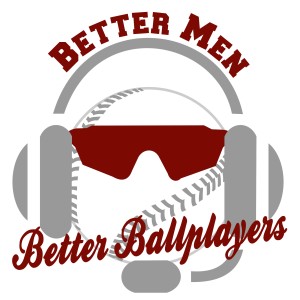

Bio
Current Infield Coach for the Baltimore Orioles
Former Assistant coach for University of Memphis2nd in School History .974 Team Fielding Percentage 65th in Nation
53 Team Errors, 2nd in School History for Fewest Errors in a Season
Former Assistant coach with the Milwaukee Milkmen
Former Assistant coach at the University of HartfordSchool Record Fewest Errors in a Season (45)
School Record .975 Team Fielding Percentage, 49th in Nation
2 Infielders taken in MLB Draft
Show notes
Bio
- Current Infield Coach for the Baltimore Orioles
- Former Assistant coach for University of Memphis
- 2nd in School History .974 Team Fielding Percentage 65th in Nation
- 53 Team Errors, 2nd in School History for Fewest Errors in a Season
- Former Assistant coach with the Milwaukee Milkmen
- Former Assistant coach at the University of Hartford
- School Record Fewest Errors in a Season (45)
- School Record .975 Team Fielding Percentage, 49th in Nation
- 2 Infielders taken in MLB Draft
Show notes
- Hand shake distance (visual out in front)
- Know your player to know how much they need to know
- Some guys need more, some less
- All about relationships
- Ask guys and open communication
- Just need to talk
- Understanding the learning style - verbal, picture, kinesthetic
- Know how much you care before they care how much you know
- They need to trust me with their career and show them they can trust me
- Have a plan with open communication
- Get feedback after a drill about how they feel and if it work for the players
- Foundation is the relationship with the players, and its not about ME!
- Once base skills are there then go position specific
- Corner guys lower and different groundballs
- Middle guys more lateral and different groundballs
- Base skills
- See it in (hand/eye drill)
- Glove isolation
- Play catch
- Hip hinge and knowing your body
- First basemen
- Cuts and relays
- Pick work
- Approach to bag
- shifting/positioning - every step towards 4 hole you take one step in
- Tags
- Starting double plays with accurate throws
- Good first baseman and good catcher will prevent a lot of runs and will not lose games for you!
- Playing multiple positions to perform different movements to help with athleticism
- Wall drills!
- Throw over shoulder
- Throw bag down and first baseman steps to bag and picks
- Shuffle off bag and catch groundball off wall
- Instruct it first, model it, and be there, and then float and let them go
- Make a checklist of everything you want to cover as a group
- Make a checklist of everything you want to cover as individual (position)
- Spend time on the things that happen in the game more frequently
- Stick to your time and just end it!
- Angles towards the base or ball. Be deliberate on the practice that they do more frequently
- Collect data that will help you design practice and specifically get better
- Pay attention to angle taken
- Pay attention to the time needed to make play
- Where are they consistently making errors? Chart that so you can practice their errors
- Good infielders have:
- Footwork -
- Proper way to play catch
- Develop arm strength and proper arm angle
- Hands
- If there is a problem with their body that is symptomatic of them making errors then you have to put in the time to determine when to work on it
- Foundationally kids catch the ball one handed and we have to teach them to put the other hand there, so let them be free and promote one hand more
- Catcher, pitcher, and first baseman are all one handed catchers.
- High IQ as an infielder
- Keep the game slow, can slow the game down, control their breathing
- Fail more in practice
- Short memory - take glove off, turn around, and then come back to the hitter when you are ready
- Practice each moment and those time you are trying to stay under control
- Practicing even in your life, not just in baseball
- Put a success rate on a drill, high or low difficulty to allow them to push themselves
- At intersquad every batter is 3-2 count to create game like atmosphere and chaos!
- Twitter - @DeJohn_5
Comments (3)
More Episodes
All Episodes>>You may also like
Create Your Podcast In Minutes
- Full-featured podcast site
- Unlimited storage and bandwidth
- Comprehensive podcast stats
- Distribute to Apple Podcasts, Spotify, and more
- Make money with your podcast
It is Free












